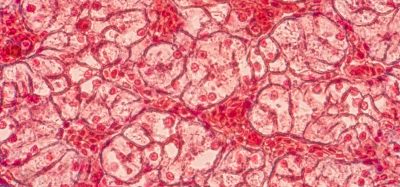Computational tool gets more out of multi-omics data
Posted: 8 May 2023 | Izzy Wood (Drug Target Review) | No comments yet
US researchers developed a next-generation computational tool called NetBID2 that can uncover difficult-to-identify proteins that drive biological processes contributing to cancer.


Scientists at St. Jude Children’s Research Hospital, US, have created an updated method of analysing multi-omic data in an effort to identify hidden drivers of cancer that are not immediately obvious through traditional sequencing approaches. The computational tool, called NetBID2, was designed to find hidden drivers of disease by taking large sets of RNA sequencing data and generating a gene-gene interactome. This interactome allows researchers to track the relationships between driver candidates and their downstream effector genes, thus identifying which signalling proteins are most central to the key relationships that fuel disease.
“Finding hidden drivers is important because many of these are potentially druggable targets. NetBID2 can find these drivers and potentially move them quickly into clinical trials. We may be able to re-purpose an already FDA-approved drug that targets an identified hidden driver to a completely different patient population that may benefit,” said Dr Jiyang Yu, St. Jude Department of Computational Biology and corresponding author of the study.
NetBID2’s capabilities were published in Nature Communications. The updated application was successful in uncovering difficult-to-identify proteins that drive biological processes, such as rapid cell growth, which contribute to cancer. These hidden drivers offer new therapeutic opportunities, either because existing drugs can already target them or because they might inspire drug developers to create new therapeutics.
“NetBID2 enables us to maximise the data we have, particularly RNA sequencing data. It goes beyond the traditional mutation or differential gene expression data to expose hidden events and information that may be functionally important,” explained Yu.
Traditional sequencing approaches struggle to identify hidden drivers because their activity depends on post-translational modifications and other mechanisms that are invisible to traditional sequencing but affect the expression of other genes. Therefore, NetBID2 was developed to find hidden drivers by squeezing out more from “big data.”
As proof of the tool’s capabilities, the St. Jude group showed it could find biologically meaningful hidden drivers in three unrelated samples. Using NetBID2, the team found unappreciated roles for MYC in adult lung cancer and for NOTCH1 in difficult-to-treat paediatric leukaemia that standard differential expression analysis at the mRNA or protein levels hadn’t uncovered, despite the genes’ having been previously linked to cancer. They also found an unappreciated role for Gabpa in normal immune cell function. The gene’s importance was context-specific in each case, highlighting the need for targeted analyses.
The software’s other capabilities, such as new visualisation tools, are meant to facilitate further analysis and discovery of hidden drivers from complex networks of RNA-sequencing and, in some cases, proteomics data.
In conclusion, NetBID2 is a next-generation computational tool that offers promising new avenues for cancer research. By identifying hidden drivers that were previously invisible to traditional sequencing approaches, it opens up new therapeutic possibilities and may lead to the re-purposing of FDA-approved drugs for new patient populations.
Related topics
Bioinformatics, Genomics, Oncology, Protein, Proteomics, RNAs, Targets
Related organisations
St Jude Children’s Research Hospital
Related people
Dr Jiyang Yu








